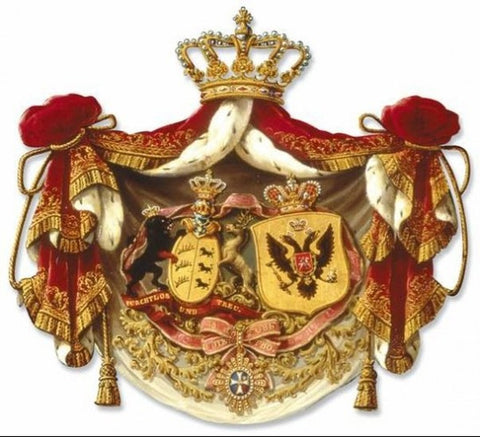
The depiction of marriage on Coats of Arms in the early Middle Ages tended to include both Coats of Arms for husband and wife contained upon a single shield. In the late 13th century, in order to fit both Arms on the one shield a process known as dimidiated, or chopped in half, occurred. This unusual practice of joining of two Coats of Arms did not persist for long and by the end of the 14th century showing full sets of Arms for both the husband and wife had become the norm.
An early example of the practice of dimidiation can be seen in the Coat of Arms used by Margaret of France after her marriage to Edward I of England in 1299. prior to the marriage, the Queen as a daughter of France would have borne the ancient arms of France ( Blue with gold fleur de lis). The seal of Queen Margaret shows her shield split vertically in two, with England’s three lions on the left and France’s fleur de lis on the right. As both charges are cut in half by the dividing line, the front half of the English lion is joined with the French fleur de lis. Dimidiation also extended to civic Heraldry and alliances resulted in some fascinating combinations. It is slightly modified in the Coat of Arms for the Czech town of Zlonice. Here the right half of a black eagle is dimidiated with a coat per fess but, while most of the eagle is cut off in the middle, its head is left intact and allowed to enter the left hand side of the shield.
An early example of the practice of dimidiation can be seen in the Coat of Arms used by Margaret of France after her marriage to Edward I of England in 1299. prior to the marriage, the Queen as a daughter of France would have borne the ancient arms of France ( Blue with gold fleur de lis). The seal of Queen Margaret shows her shield split vertically in two, with England’s three lions on the left and France’s fleur de lis on the right. As both charges are cut in half by the dividing line, the front half of the English lion is joined with the French fleur de lis. Dimidiation also extended to civic Heraldry and alliances resulted in some fascinating combinations. It is slightly modified in the Coat of Arms for the Czech town of Zlonice. Here the right half of a black eagle is dimidiated with a coat per fess but, while most of the eagle is cut off in the middle, its head is left intact and allowed to enter the left hand side of the shield.


An alliance of two Coats of Arms, side by side on a shield, is known as an “impalement”. The difference between impalement and dimidiation is that the former shows both shields in their entirety. The placing of two or more Coats of Arms on a single shield is called ‘marshalling”. Marital impalement is associated in particular with British heraldry, but there are differences within Britain on how it is practically observed. In England it is used when the wife has brothers who will carry on her family Arms, so that she is not classed as an heraldic heiress. In such a case the children born to the marriage inherit only the Coat of Arms of the father. In Scotland, however, impalement is used in both cases, whether the wife is an heraldic heiress or not. In France, Holland, Belgium and Luxembourg no distinction is made.
In much of Europe a marital Coat of Arms is denoted less by impalement and more by two separate shields set side by side or “accolee”. Often the two shields are tilted so they touch each other at one corner. In Germany the shields of both husband and wife are surmounted by helm and crest; a display of two complete achievements is known as an Allianzwappen or Eehewappen.
In much of Europe a marital Coat of Arms is denoted less by impalement and more by two separate shields set side by side or “accolee”. Often the two shields are tilted so they touch each other at one corner. In Germany the shields of both husband and wife are surmounted by helm and crest; a display of two complete achievements is known as an Allianzwappen or Eehewappen.


